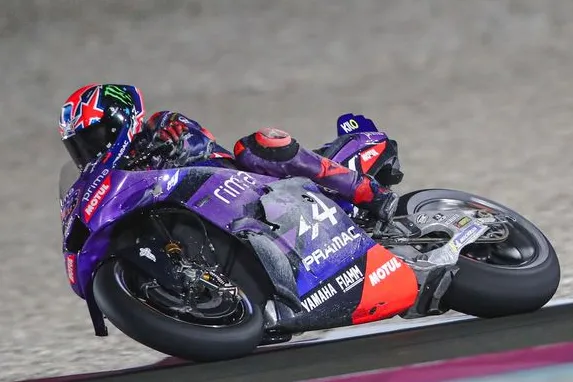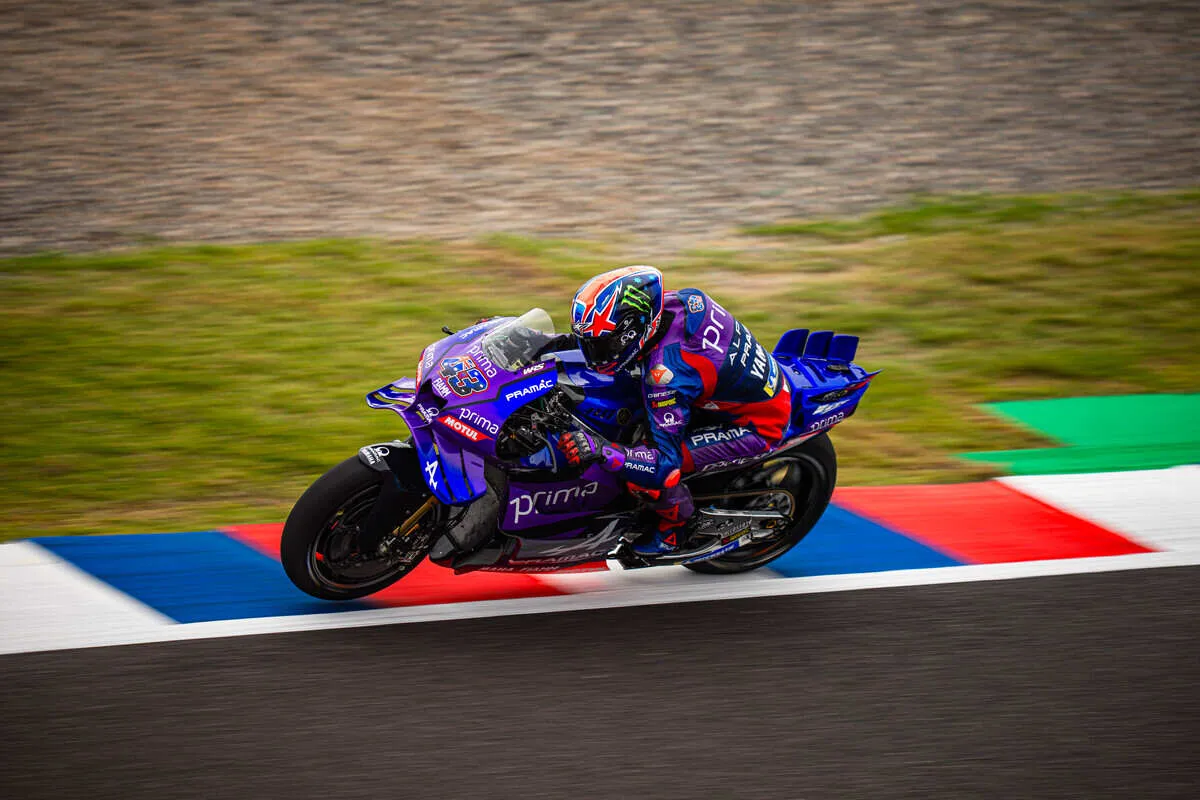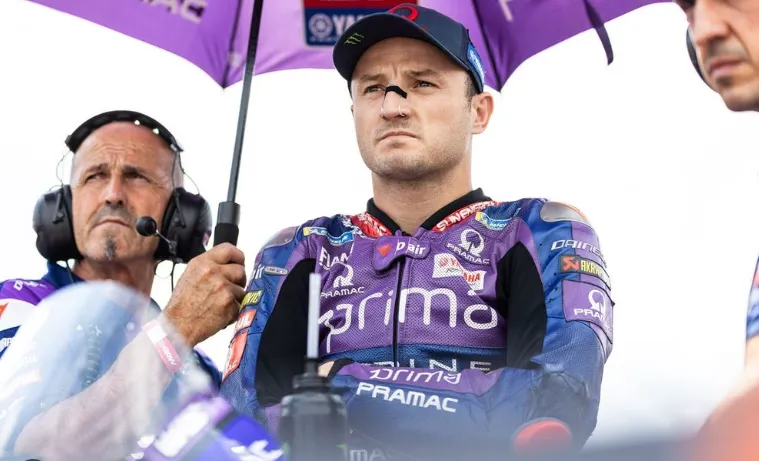

Jack Miller Admits Mistake at MotoGP: ‘I Took a Risk with Soft Rear Tire, But It Failed’ – What Went Wrong with This Strategy?
Jack Miller is no stranger to high-stakes gambles on the MotoGP grid, but his recent confession following the latest Grand Prix has reignited discussions about tire strategy in modern MotoGP racing. After taking a calculated risk by choosing a soft rear tire for the race, Miller’s expectations came crashing down when the decision backfired, leaving him unable to deliver the performance he had hoped for. In a brutally honest post-race interview, the Australian rider admitted: “I took a risk with the soft rear tire, but it failed.”
In this article, we break down what went wrong with Jack Miller’s tire gamble, examine the broader implications of tire strategies in MotoGP, and explore how this decision affects his season and team dynamics moving forward.
Jack Miller’s Risky Tire Gamble Explained
The heart of the issue was Miller’s decision to use a soft rear tire in conditions that proved less than ideal for its performance window. In theory, the soft compound offered superior grip and acceleration during the early laps—a critical factor for a strong race start and early overtakes. However, the downside to soft tires is their faster degradation, especially under extreme heat or in high-traction circuits.
Miller’s gamble centered on the belief that an early advantage could offset any potential late-race tire drop-off. “We thought we could pull away early,” he explained. “I was confident the soft would give me that edge, especially off the line. But from lap five onwards, I felt it going. The rear just didn’t hold up.”

The Hidden Challenges of Soft Tire Management
Choosing the wrong tire compound in MotoGP isn’t just about losing grip—it can throw off an entire race strategy. In Miller’s case, the soft rear tire began degrading rapidly, leading to traction loss, increased lap times, and eventually compromised corner exits. This exposed him to overtakes and forced him into defensive riding—something no front-runner wants to do mid-race.
Tire management has become a critical skill in modern MotoGP, and riders now walk a thin line between aggression and preservation. “Once the tire started dropping, I couldn’t keep pace,” Miller said. “It’s frustrating because we showed decent speed in practice, and I really thought the soft compound could give us a shot at the podium.”
The KTM rider’s risk didn’t just impact his position in the race—it also had a ripple effect on how other riders perceived their own tire choices. The outcome highlighted how temperature, track surface, and riding style all interact to make tire selection a highly complex decision.
KTM’s Setup Dilemma and Team Strategy Fallout
While Miller accepted full responsibility for the call, the decision wasn’t made in isolation. The Red Bull KTM Factory Racing team was also banking on the soft tire’s potential upside. Race engineers, tire technicians, and strategists weighed in during the final setup discussions, and the team jointly opted for the aggressive compound.
This failure underscores a growing issue within KTM: inconsistent setup optimization across race weekends. Brad Binder, Miller’s teammate, chose a more conservative medium rear tire and finished significantly higher—fueling speculation about internal disagreements over strategy calls.
“Binder’s result makes it obvious,” said one paddock insider. “Jack went aggressive and lost big. The team now has to recalibrate how much they rely on rider instinct versus data-driven modeling. The cost of a wrong tire decision is simply too high.”
MotoGP’s Unforgiving Tire Window: No Margin for Error
One of the key elements that define modern MotoGP is how narrow the tire performance window has become. Michelin, the exclusive tire supplier, provides three rear compounds—soft, medium, and hard—for each race weekend, and the characteristics of each vary dramatically based on conditions.
For Miller, the window closed early. As the tire began to fade, rear grip vanished, causing wheelspin and reducing braking stability—two critical areas for competitiveness. “The moment I lost that rear feel, it was like riding a completely different bike,” Miller admitted. “I was fighting it through every corner.”
Unlike previous eras of racing where talent could override tire wear, the current MotoGP landscape punishes poor tire management mercilessly. It’s not enough to ride fast; riders must also ride smart, adjusting cornering lines, braking markers, and throttle control based on how the tire behaves.
The Bigger Picture: Miller’s Standing in the Championship
Beyond the technical and strategic failure, the soft tire gamble has dented Jack Miller’s championship hopes. With every race counting in the tightly packed 2025 MotoGP standings, finishing outside the top ten means valuable points lost to rivals like Francesco Bagnaia, Marc Marquez, and Jorge Martin.
This result also deepens the narrative that Miller is struggling to keep up with elite consistency. While he remains a fan favorite for his aggressive, never-say-die style, critics have questioned whether he can translate that spirit into title contention.
The upcoming rounds will be crucial. “We’ve got to bounce back—no excuses,” Miller acknowledged. “There’s a long season ahead, but we’ve got to be smarter about the risks we take.”
Rider Psychology: Confidence vs. Calculation
In the heat of race day, the balance between confidence and calculation often defines MotoGP careers. For Jack Miller, the tire choice reflected his trademark bravado—an instinct to go bold and chase results rather than play it safe.
But this same boldness has often put him in vulnerable situations. As fans and analysts reflect on the Qatar GP, many wonder if Miller’s tendency to trust his gut sometimes outweighs the strategic patience needed at the highest level.
“When it works, Jack looks like a genius,” noted a veteran MotoGP analyst. “But when it doesn’t, it exposes him in ways that data-driven riders avoid. That’s the double-edged sword of his racing style.”

Lessons for the Grid: Will Others Follow or Learn?
Miller’s failed gamble has wider implications for the entire MotoGP paddock. With each race becoming more data-intensive and team collaboration more crucial than ever, riders may begin to shift away from intuition-led decisions.
Teams like Ducati and Aprilia are reportedly investing in AI-based tire simulation tools to better predict compound behavior in live conditions. KTM may need to fast-track similar initiatives if they hope to minimize errors like Miller’s tire choice.
“You can’t afford to rely on feel alone anymore,” said a KTM engineer off-record. “The sport’s changed. The margins are too tight. You need predictive tools and contingency plans.”
Conclusion: A Risk That Backfired, but a Lesson Learned
Jack Miller’s decision to run the soft rear tire at MotoGP’s Qatar round was a bold move, rooted in confidence and ambition. Unfortunately, the gamble didn’t pay off. Instead of securing an early lead and podium contention, he was left managing a rapidly degrading tire and slipping down the field.
While the mistake may haunt his 2025 campaign, it also offers valuable lessons for Miller, KTM, and the entire MotoGP paddock. Tire strategy is no longer a secondary concern—it is central to a rider’s success. And as the competition tightens, there’s less room for errors, no matter how small they may seem.
Miller’s admission was refreshingly candid: “It was my call, and it didn’t work. But we’ll learn from it. That’s racing.”
As the season continues, fans can expect Miller to bounce back with his trademark tenacity—hopefully with smarter tire decisions and renewed strategic backing.


















